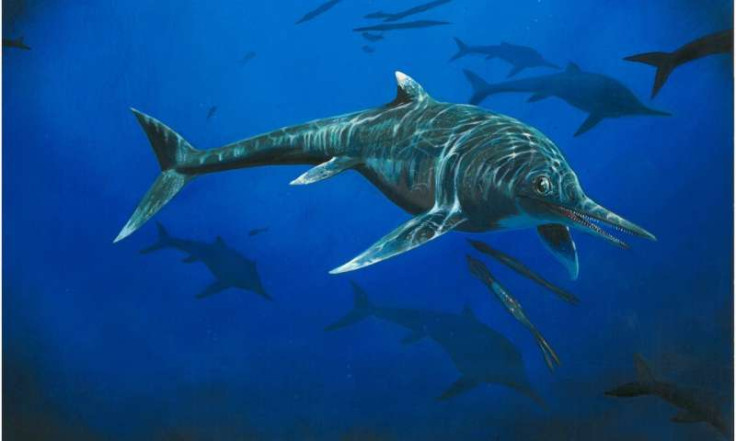200 million-year-old fossil of rare Jurassic-era 'sea dragon' was found hidden in private collection
The ichthyosaur fossil was first found in 1996 in Somerset and had been residing in a private collection before it was identified.

A 200 million-year-old fossil of a rare Jurassic-era "sea dragon" was recently discovered by British palaeontologist and dinosaur expert at the University of Manchester, Dean Lomax. The fossil was first found in 1996 in Somerset and had since been residing in a private collection before it was identified.
Ichthyosaurs, also known as "sea dragons", were reptiles that swam about in Earth's seas at a time when dinosaurs ruled supreme. Numerous fossils of the ancient sea creature have been found in the UK, and Lomax himself has identified five different species of the ancient reptiles.
The fossil belongs to a new species of ichthyosaur, called Wahlisaurus massarae, and is only the second of its kind. He named it honouring two of his mentors, Bill Wahl and Professor Judy Massare.
Lomax first identified the new species of ichthyosaur in 2016 after finding several unusual features that were unique to the specimen. According to Lomax, the fossil is from the "Triassic-Jurassic boundary, right after a world-wide mass extinction".
"When Wahlisaurus was announced, I was a little nervous about what other palaeontologists would make of it, considering the new species was known only from a single specimen. As a scientist you learn to question almost everything, and be as critical as you can be. My analysis suggested it was something new, but some palaeontologists questioned this and said it was just 'variation' of an existing species," Lomax wrote in an article in Capeia.
According to Lomax, the fossil's caracoid bone has the same unique features found in the same bone of the Wahlisaurus.
The second specimen of the British #ichthyosaur Wahlisaurus, a species I named in 2016.
— Dean R. Lomax (@Dean_R_Lomax) February 1, 2018
Found in a private collection & donated to @BristolMuseum. After criticisms for naming Wahlisaurus, finding another is exciting. My thoughts here: https://t.co/BMXYfguwdb
Art: James McKay pic.twitter.com/2EEt7kTw2l
"You can only imagine my sheer excitement to find a specimen of Wahlisaurus in Simon's collection. It was such a wonderful moment. When you have just one specimen, 'variation' can be called upon, but when you double the number of specimens you have it gives even more credibility to your research," Lomax added.
Since it was first discovered, the ichthyosaur fossil was residing in the private collection of Simon Carpenter, which is where Lomax first happened to glimpse it and realised that it was a specimen of the Wahlisaurus. The fossil has since been donated to the Bristol Museum and Art Gallery.
Although the fossil is believed to be around 200 million years old, Lomax and his colleagues, Dr Mark Evans, palaeontologist and curator at the New Walk Museum in Liecester, as well as Carpenter have been unable to determine whether the ichthyosaur was from the late Triassic or early Jurassic period.
"The discovery of the new specimen in a private collection helps to recognise the important contribution of dedicated and responsible fossil collectors," Lomax said. "I am especially grateful to Simon for donating the specimen and collecting all of the data available with the specimen when he found it."
The new study has been published in the Geological Journal.






















